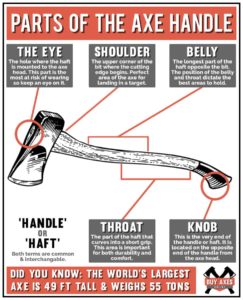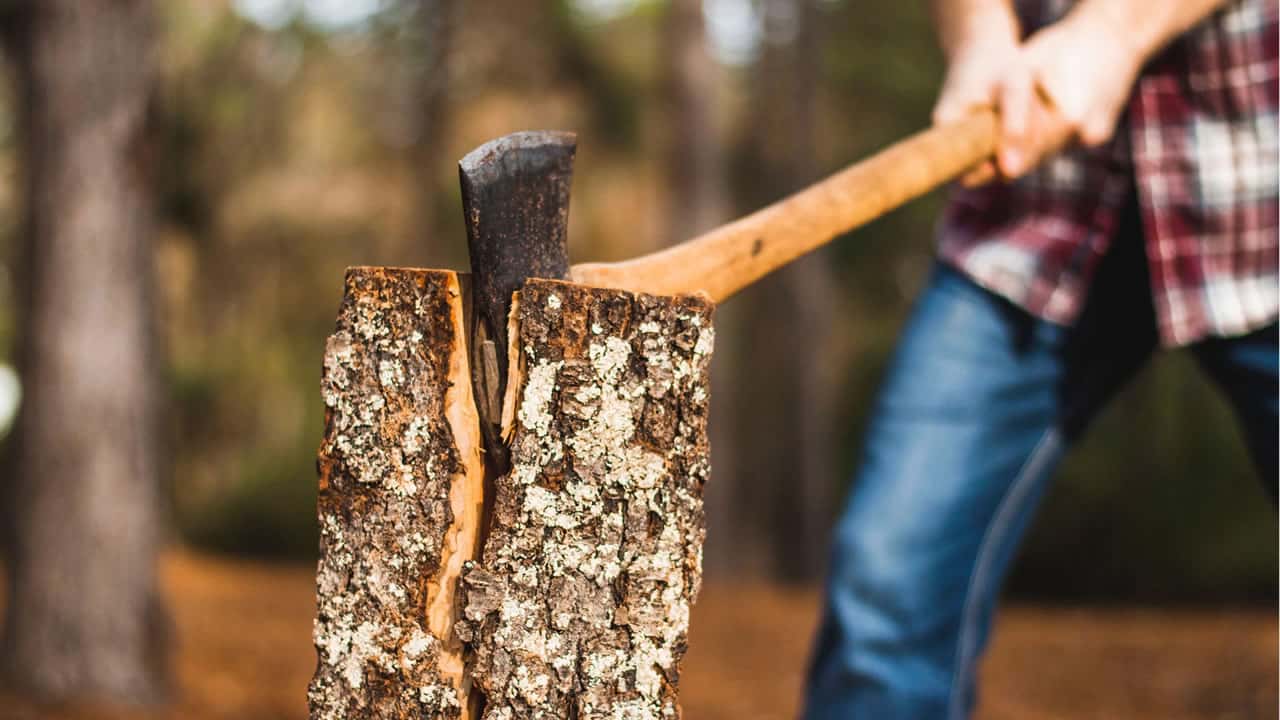Chopping wood is a fundamental skill, whether for a seasoned lumberjack, a homeowner managing their firewood supply, or an outdoor enthusiast preparing a campsite. The key to efficient and safe wood chopping lies in using the right tool – the chopping axe. This comprehensive guide will provide you with all the information you need to know about chopping axes.
Understanding Chopping Axes
Chopping axes are designed for cutting through wood fibers, making them ideal for felling trees, chopping firewood, and clearing brush. Unlike splitting axes, which are used to split wood along its grain, chopping axes are crafted to cut across the grain.
Anatomy of a Chopping Axe

- Head: The head is typically heavier than that of a splitting axe, providing the necessary power for chopping.
- Bit or Edge: This is the sharp part of the axe head used for cutting.
- Cheek: The side of the axe head, which adds weight and power to the cut.
- Poll or Butt: The rear part of the head, sometimes used for hammering.
- Handle: Usually made of wood like hickory, or modern materials like fiberglass, the handle is long enough to provide leverage but not as long as a felling axe.
Types of Chopping Axes
1. American Felling Axe
- Best for: Cutting down medium to large-sized trees.
- Features: A long handle and a heavy head, offering power and reach.
2. Scandinavian Forest Axe
- Best for: Lighter chopping tasks and smaller trees.
- Features: A more lightweight design with a thinner edge for precision.
3. Hatchet
- Best for: Small chopping tasks, like kindling and small branches.
- Features: A short handle and a light head for control and ease of use.
4. Camp Axe
- Best for: General-purpose chopping in outdoor and camping scenarios.
- Features: A balance between size and weight, suitable for various tasks.
Choosing the Right Chopping Axe
When selecting a chopping axe, consider:
- The Task at Hand: Larger trees and logs require an axe with a longer handle and heavier head.
- Your Physical Strength: Ensure the axe is comfortable for you to swing and carry.
- Handle Material: Wooden handles offer shock absorption, while synthetic handles provide durability and weather resistance.
- Head Weight: Heavier heads deliver more power but can cause fatigue.
How to Use a Chopping Axe Safely and Effectively
1. Proper Stance and Grip
- Stand with your feet shoulder-width apart for stability.
- Grip the handle near the end with your dominant hand and closer to the head with your other hand.
2. Effective Swing Technique
- Raise the axe above your head and swing it down in a controlled arc, letting the weight of the head do most of the work.
3. Aim and Accuracy
- Focus on where you want the axe to hit. Consistency in your swing is key to effective chopping.
4. Safety Precautions
- Wear protective gear, including gloves and eye protection.
- Ensure your chopping area is clear of obstacles and people.
Maintaining Your Chopping Axe
Proper maintenance is essential for the performance and longevity of your axe.
1. Sharpening the Edge
- Use a file or sharpening stone to keep the edge sharp. Follow the original angle of the edge for best results.
2. Caring for the Handle
- Inspect the handle regularly for cracks or wear.
- Treat wooden handles with linseed oil to prevent drying out and cracking.
3. Storing the Axe
- Store your axe in a dry place with a protective sheath over the blade to prevent rusting and damage.
Advanced Chopping Techniques
As you become more skilled, you can explore advanced chopping techniques like the V-cut for felling trees or precise chopping methods for creating specific wood shapes.
Using a Chopping Axe for Survival
In a survival situation, a chopping axe can be invaluable for building shelter, obtaining firewood, and even self-defense.
Environmental Considerations
Responsible wood chopping involves understanding and respecting the environment. Be mindful of sustainable practices and local regulations, especially when chopping in wild or protected areas.
Conclusion
A chopping axe is a vital tool for anyone who works with wood or spends time outdoors. Choosing the right axe for your needs and using it safely and effectively can transform the laborious task of chopping wood into a satisfying and productive experience. Whether you’re preparing firewood for the winter, clearing land, or setting up a campsite, mastering the use of a chopping axe is a skill that pays dividends in self-sufficiency, fitness, and connection to the natural world. Remember, the best chopping axe is one that feels right in your hands and suits your specific requirements, so choose wisely, maintain it well, and chop responsibly.


